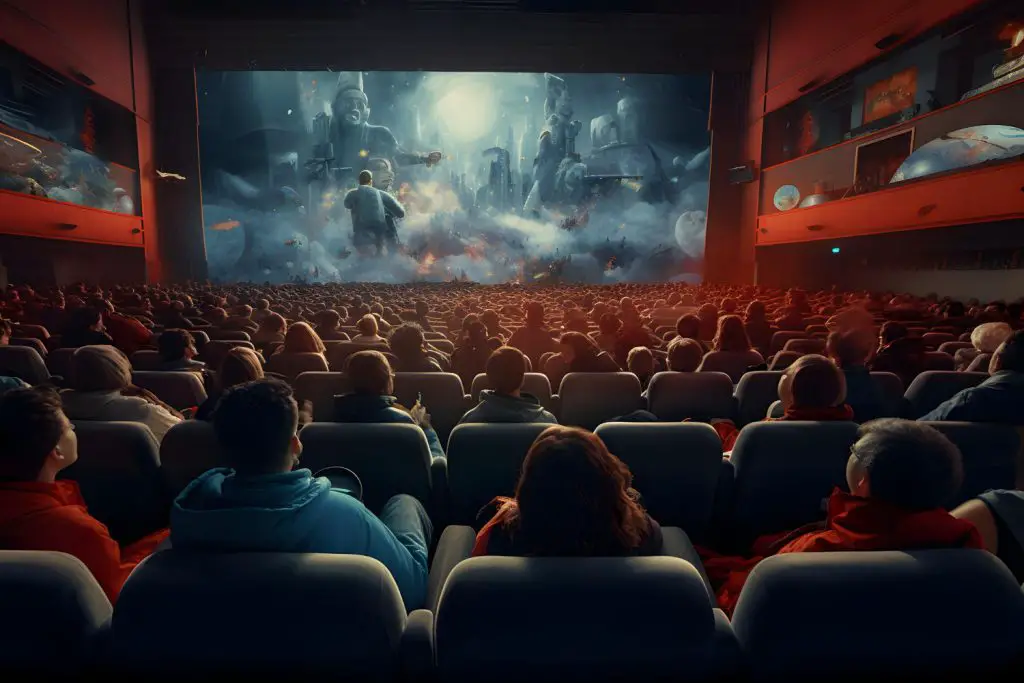Upon initial contemplation, the aspect ratio of a movie might seem an insignificant detail. Is it crucial for every cinema-goer to experience all varying aspect ratios? However, this seemingly innocuous element has been gaining significant traction in recent years, particularly in the aftermath of the global pandemic. The pre-pandemic cinema attendance numbers have yet to rebound, with a complex network of reasons underpinning this trend. Unpleasant cinema experiences caused by inconsiderate audiences, the skyrocketing popularity (and cost) of premium screens such as IMAX and other oversized formats, and the limited availability of these screens have all played a part in this persisting issue.
The Significance of Aspect Ratio in the Cinema Experience

The concept of aspect ratio, essentially the ratio of the image’s width to its height, holds a pivotal role in the cinematic experience. Different aspect ratios can either fill up your TV screen or leave noticeable gaps. One of the notable examples of this is the CinemaScope aspect ratio, a popular choice during the 1950s and ’60s, which results in a rather wide, thin image compared to today’s standard widescreen formats. When indulging in your favorite classic films, you might notice this stark difference in aspect ratio. CinemaScope provides a more expansive view, capturing a larger image from the sides.
IMAX films, on the other hand, offer an even bigger image, around 40% bigger as per IMAX’s estimation. If you’ve had the privilege of watching a film in an IMAX theater, you’ll understand the grandeur of the experience. It isn’t merely a larger image, but it includes more information from the film that is typically cropped out for standard theaters. While generally, this information isn’t crucial, it significantly boosts the immersive quality of the experience.
The Cost and Availability Dilemma of IMAX

IMAX sounds fantastic, doesn’t it? However, this premium experience comes at a hefty price. Tickets for an IMAX movie are consistently more expensive than regular ones, with the cost even varying by location. The bigger the city, the heftier the price tag. For example, the discrepancy in ticket prices between Texas and New York is around ten dollars, with New York taking the lead. Even though it seems logical that you’re paying for a heightened experience, it’s evident that many movie-goers are being financially excluded. If you’re going solo, the price may not be a deal-breaker. But if you’re planning a family outing, the total cost can easily skyrocket to over a hundred dollars, not factoring in the additional expense of snacks.
The price tag isn’t the only hurdle, however. Another significant barrier is the limited number of theaters equipped to handle these enhanced formats. For instance, Oppenheimer will only be shown in its full-frame IMAX 70mm film format in a meager 30 theaters worldwide. Certain areas are devoid of any IMAX theaters. This issue highlights a larger problem – the diminishing quality of the theatrical experience. Many theaters aren’t upgrading their facilities, and the declining quality of communal movie-going experiences, including disturbances such as talking and phone use, are pushing people to opt for the tranquility of home-based digital releases.
Most cinema-goers aren’t willing to travel great lengths for an enhanced cinematic experience. The scarcity of these premium screens and the economic burdens associated with them are turning them into exclusive privileges rather than shared experiences. It’s not only unfair but also poses a substantial challenge to making these premium experiences widely accessible in terms of both location and cost.
Experiencing IMAX at Home: A Viable Alternative?

One possible solution to this predicament would be to make these alternate aspect ratios readily available for home viewing. Certain films do offer the option of viewing the expanded aspect ratios on Blu-ray. However, a significant number seem to neglect this, sticking with the standard aspect ratio on the disk, offering no alternative way to experience the movie in other formats.
Certain exceptions do exist. Disney+, for instance, provides the “IMAX Enhanced” experience exclusively on its streaming service while maintaining the normal format for Blu-ray releases. Other films, such as Interstellar and Nope, receive special treatment, proving that it’s feasible to bring these formats to audiences who may only have the option of viewing them at home.
Despite these small wins, it’s peculiar how certain versions of films persist over others due to factors such as different cuts or music. Aspect ratios are likely one of the last things people consider when thinking about varied film versions. However, it’s crucial to note the importance of film preservation, including these alternate aspect ratios. Providing broader access to these formats not only allows more people to experience their favorite films in a new way but also ensures the preservation of different film versions. Streaming services offering these experiences mark a promising start, but with their notoriously fickle nature, it’s crucial to find a more permanent solution for preservation.
In Conclusion

The shift in the movie industry’s landscape post-pandemic has illuminated the importance of the film aspect ratio and the challenges associated with making premium formats like IMAX widely accessible. With movie-goers getting economically and geographically marginalized, it’s paramount to reassess and address these issues to ensure the survival of the communal cinematic experience. The fight isn’t only about preserving varied versions of films but also about redefining the movie-going experience for all, regardless of location or financial capabilities.


